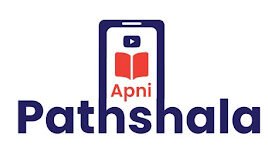|
GS Paper II: Government Policies and Interventions |
Why in News?
NAKSHA Program: Recently, on February 18, the Union Minister for Rural Development and Agriculture & Farmers’ Welfare launched the National Geospatial Knowledge-based Land Survey of Urban Habitations (NAKSHA) program. This initiative aims to enhance the accuracy and transparency of urban land surveys.
What is the NAKSHA Program?
The National Geospatial Knowledge-based Land Survey of Urban Habitations (NAKSHA) program is a modern geospatial technology-based urban land survey initiative. Its primary goal is to create and update land records in urban areas, ensuring transparency, accuracy, and efficiency in property ownership documentation.
- The program is implemented by the Ministry of Rural Development, Government of India.
- It is executed under the Department of Land Resources (DoLR) in collaboration with the Survey of India and National Informatics Centre Services Inc. (NICSI).
- It was announced in 2024 under the Digital India Land Records Modernization Programme (DILRMP).
- The pilot project will be launched in 152 Urban Local Bodies (ULBs) across 26 states and 3 Union Territories (UTs).
- A budget of ₹194 crore has been allocated for the project, 100% funded by the Government of India.
- The initiative will minimize property disputes and enhance the digital and geospatial accuracy of land records.
- Its main objective is to digitize, update, and maintain urban land ownership records to make them more precise and reliable.
How Will the NAKSHA Program Work?
- Aerial Survey: The Survey of India will use advanced drone and satellite technology to conduct aerial surveys of urban areas, generating high-precision orthorectified imagery.
- Web-GIS Platform: A comprehensive Web-GIS platform will be developed by the Madhya Pradesh State Electronics Development Corporation (MPSEDC) to digitize and analyze land data.
- State-Level Coordination: A State Level Committee (SLC), chaired by the Chief Secretary, has been established to oversee implementation, monitor progress, and assist in policy-making.
Benefits of the NAKSHA Program
- Reduction in Land Disputes: Certified land ownership documents will reduce property disputes, easing the burden on the judiciary and enabling faster resolution.
- Boost to Digital India: Digitization and online registration of property records will provide fast, transparent, and secure land services, curbing corruption and fraud.
- Improved Urban Planning: Accurate land records will strengthen smart city development and infrastructure planning, ensuring efficient management of transport, water supply, sewage, and other urban services.
- Increased Investment and Economic Growth: Clear and authenticated land ownership will boost real estate, infrastructure, and industrial investment, accelerating economic growth.
- Enhanced Governance: A Web-GIS-based IT system will make land record management transparent and efficient, ensuring effective implementation of government schemes.
- Sustainable Urban Development: The program will facilitate better management of urban land resources, improving governance and enabling eco-friendly urban expansion.
Digital India Land Records Modernization Programme (DILRMP)
- Background:
- The National Land Record Modernization Programme (NLRMP) was launched by the Government of India in 2008 with the objective of modernizing the land record system and implementing Conclusive Land Titling.
- In 2016, the program was revamped and renamed as the Digital India Land Records Modernization Programme (DILRMP) under the Digital India initiative.
- Program Structure:
- DILRMP is a Central Sector Scheme with 100% funding by the Central Government.
- The program was extended for five years (2021–2026) to accelerate the modernization of land records.
- Key Components of DILRMP:
- Land & Registration Computerization – Transitioning land records and registration processes into digital formats.
- Revenue Court Digitization – Enhancing transparency and efficiency in judicial proceedings.
- Aadhaar Integration (Voluntary) – Linking land records with Aadhaar numbers for better authentication.
- Breaking Language Barriers – Transliterating land records in all languages listed in Schedule VIII of the Indian Constitution.
- Major Initiatives under DILRMP:
- Unique Land Parcel Identification Number (ULPIN) – “Bhu-Aadhaar”: A unique identification number for each land parcel, similar to Aadhaar, ensuring accuracy and transparency in records.
- “Bhoomi Samman”: Incentives and awards for state governments to encourage efficient land record management.
- National Generic Document Registry System (NGDRS) – “One Nation, One Registration”: A unified software platform for online registration of properties and documents, eliminating the need for manual registration.
- Key Achievements of DILRMP:
- 95% of Records of Rights (RoR) have been digitized.
- 68% of cadastral maps have been digitized.
- 95% of land registration processes have been computerized.
- Benefits of DILRMP:
- Increased Transparency in Land Administration
- Reduction in Corruption
- Boost to Rural Development
- Minimization of Land Disputes
- Enhanced Disaster Management Support
Key Challenges in Land Planning Programs
- Lack of Trained Manpower: The digitization of land records and modern geospatial surveys require skilled professionals, including trained surveyors, IT experts, and administrative officers.However, many states face a shortage of qualified personnel in revenue departments, leading to delays in surveys and record updates.
- Structural Barriers: India’s land administration system is divided across multiple levels (Central, State, and Local authorities), creating coordination challenges in implementation. Several states still rely on outdated land record systems and manual documentation.
- Slow Progress: Despite years of land digitization initiatives, the pace of implementation remains slow due to technical challenges, financial constraints, and complex administrative procedures.
- Weak Linkage: In India, land record management and property registration systems are often handled by separate departments, leading to data discrepancies and inconsistencies in ownership records.
- Cybersecurity Concerns: Ensuring cybersecurity, preventing data theft, and addressing technical glitches are major challenges in digital land record systems. There is a need to establish a secure, centralized platform for land record management.
|
UPSC Previous Year Questions (PYQs) Question: In the context of land reforms in independent India, which of the following statements is correct? (a) Ceiling laws were focused on family holdings rather than individual holdings. (b) The primary objective of land reforms was to provide agricultural land to all landless people. (c) As a result of land reforms, cash crop cultivation became the dominant form of agriculture. (d) Land reforms did not allow any exemptions on ceiling limits. Answer: (b) Question: Discuss the role of land reforms in agricultural development. Identify the factors responsible for the success of land reforms in India. |
Explore our Books: https://apnipathshala.com/product-category/books/
Explore Our test Series: https://tests.apnipathshala.com/









